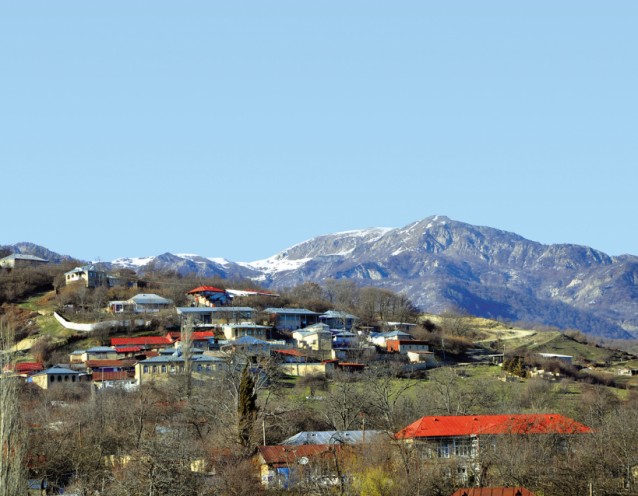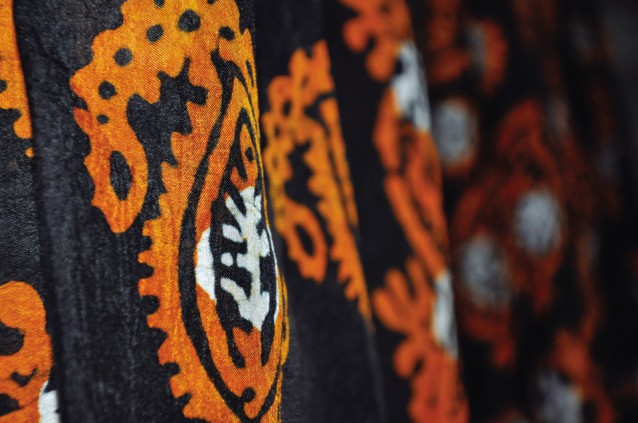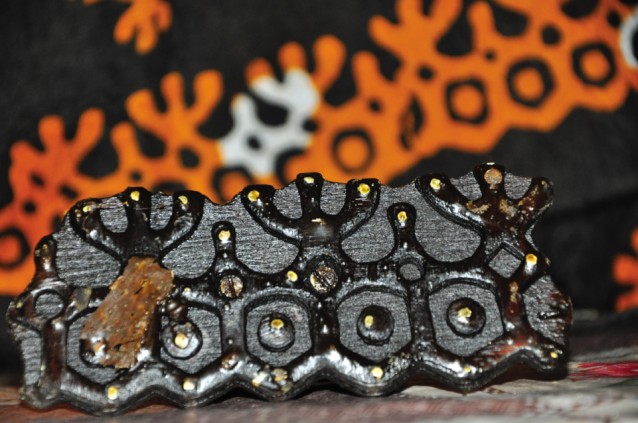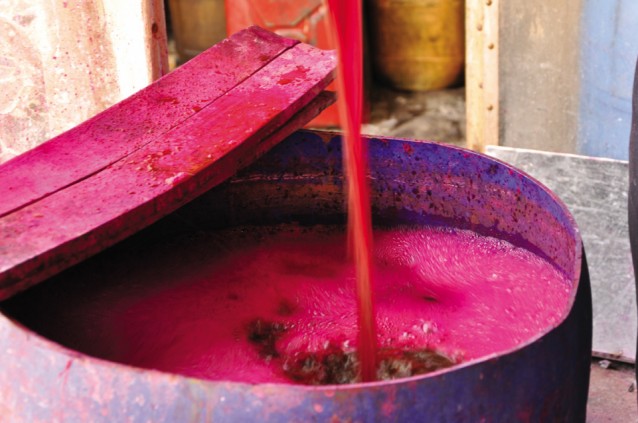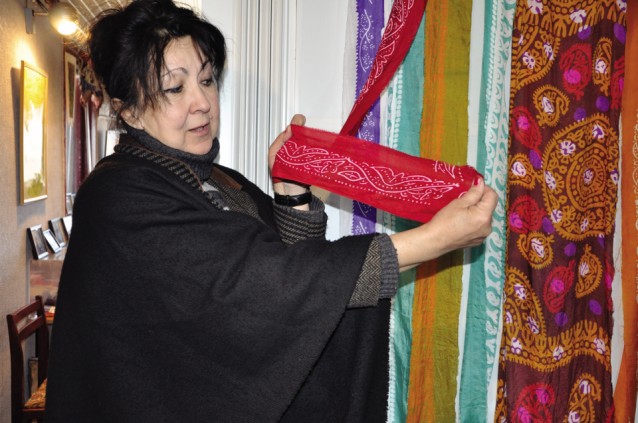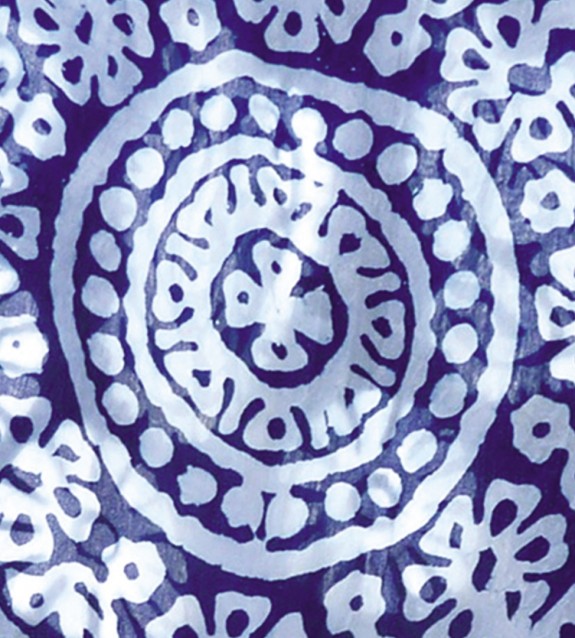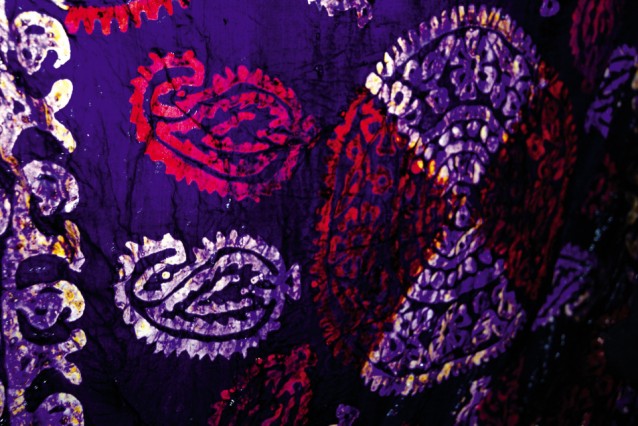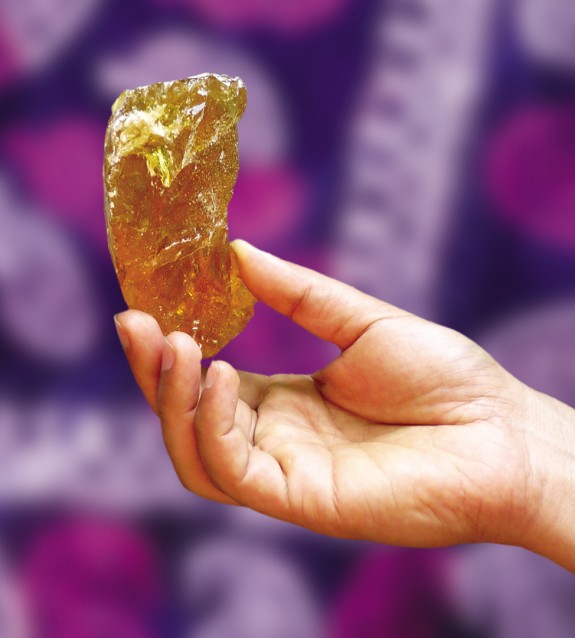Basqal is a centre of traditional silk weaving.
Basqal was for centuries a trans-shipment point on the Silk Road connecting Asia with Europe. It was here that Azerbaijan captured the technology of silk production, along with other exotic goods, from the mysterious East. Thus medieval Basqal, along with other cities like Sheki and Ganja, became a focus of the silk weaving industry.Originally made from silk brought along the Silk Road, kelegayis soon became the traditional headscarf covering the heads and shoulders of Azerbaijani girls and women. It added to their beauty and silk’s amazing qualities – it is cool in summer and warm in winter - protected them from the hot sun and cold wind.
Silk has another quality - touching it is like balm for the soul; it is very soothing and hygienic. No flies and mosquitoes can rest on silk. And how beautiful it is, how pleasing to the eye!
Certain colours at a certain age…
It became a tradition to wear kelegayis of certain colours at certain ages. Thus, unmarried girls would cover their heads with a bright, vibrant colour, usually yellow, pink, gold or purple. Dark colours were worn by older women.In fact, there is an extensive palette for these scarves and particular colours could be associated with a particular event. For example, if the family had suffered grief, the women would usually wear a dark scarf.
For her wedding, a bride would wear a bright red scarf and her face was hidden. Nowadays it is impossible to imagine anything other than a pure white veil, but it used to be red. Another interesting fact is that the bride’s family gave the groom a present of a kelegayi folded repeatedly along a longitudinal line. The groom would have it draped over his shoulders during the ceremony.
Instead of accessories
Although those days are long gone and some traditions have disappeared, a kelegayi still pleases the eye and warms the soul. They are not seen so often but women, mainly from the older generations, can still be seen wearing them over their heads in certain regions and on the outskirts of Baku. Girls prefer to use them as accessories, tied gracefully around their necks or covering the shoulders.Kelegayis were traditionally square in shape and regular in size - 150x150 or 160x160 cm was easily folded into four parts for ease of daily wear, large enough to cover both head and shoulders. Nowadays it is made in different forms - rectangular as a scarf, or square, and smaller in size.
Principal pattern – the Buta
Another very important part of any kelegayi is a pattern printed around its edges or over the entire surface. Every pattern has meaning and may be associated with a plant, or isomorphic and geometrical shapes. But the main figure used in ornamentation was the buta, which is familiar in the west as the main element in the ‘paisley’ pattern. By the way, almost every nation along the Silk Way has used the buta in its folklore. Its meaning is very closely connected with the image of fire.There is a further connotation in the buta: representing the ‘yin and yang’, as feminine and masculine, a concept which has eastern roots. A kelegayi with a buta pattern symbolises the continuity and strength of family ties, and abundance for the future family, a natural gift for newlyweds.
We began this article with a description of ancient Basqal, as it is there, in Basqal, that residents have maintained the tradition of kelegayi making, a tradition going back at least one thousand years - so long for the secrets of batik painting and pattern printing on silk to be successfully passed down the generations. These patterns are so deeply engrained in the lives of local people that they use them everywhere, even on souvenir stones, clothes making, cake decoration etc.
Here, of course, we should add that in addition to Basqal, where old looms are still preserved, another Azerbaijani city – Sheki - is also famous for its kelegayis and is considered to be the heartland of Azerbaijani silk.
Stamping a story
Trip to Basqal
Visions of Azerbaijan took the short trip to Basqal to see how this scarf is made. At its centre is a museum run by Rena Ibragimbeyova and her husband, with spectacular views of the towering snow-topped mountains. Nearby is the kelegayi workshop. All the workers are from Basqal and grew up in families with strong traditions in the craft.Before the museum was established, Rena tells us she walked from home to home in Basqal in search of old looms and the people to operate them. Still Basqal people represent several generations of silk workers - kelegayichi. There are clans that, over 10-15 generations, have passed down the skills and rules, canons and tricks of the trade as an inheritance.
People from our workshop have preserved antique prints of drawings; some are more than 300 years old. The patterns they apply to the silk are not just elements of decoration, they tell a story. It is almost a cosmological view of the world: the mountains, the sky and man protected by the mountains. You know, life is short and the patterned line always breaks – just as earthly life does.
A very entertaining affair
She tells us that there was a plant producing silk in Basqal in Soviet times. However, in the 1990s, with the collapse of USSR, the factory ground to a halt. Many of its workers had to move out in search of a living. Only a few remained who had experience in making pure silk kelegayis.In the museum we tell our visitors about the history of kelegayi making as well as about the patterns and their meanings. We have restored historical prints that were traditionally used to colour the silk. In our workshop we have an old wooden loom that was assembled piece by piece. Some of its components are several hundred years old, but it is still in working condition.
The museum is really a special place for tourists. Anyone can become a live part of the whole kelegayi-making process. So each visitor, hearing the story of silk and symbolic ornament, can create their own unique scarf by selecting the traditional patterns they like.
Some people like mountains, some birds, and some might trust the master and take his world view with them. We try to work with professional artists; this is returning an old tradition to modern life. And we didn’t want simply to collect and store information about silk in Azerbaijan. The main point was to restore the tradition of hand-made silk products, in particular the kelegayi headscarf - an integral part of national female costume. Basqal is in a valley, far from the other silk-producing centres. And its inhabitants have preserved a tradition which has continued for at least a thousand years.
After hearing the story of the kelegayi at the museum we moved on to another part of the building which was pure workshop studio. There we tried our hands at creating a kelegayi for ourselves. To tell the truth, it was a very entertaining affair…
But how it is done?
First of all, we do need pure silk. The studio does not produce silk itself, the raw material comes from Sheki. The raw, white silk looks rough and tough material. Master craftsmen or, as they are called, kelegayichi, first boil the raw silk in big vats. After boiling it must be dried. Only then can the painters begin their pattern making on it. The pattern stamp is called a ghalib and is usually made of solid wood - pear or walnut. Each ghalib has its own pattern within its own meaning. Patterns called khoncha are usually printed in the centre of a composition, while yellani are applied at the edges. Combined into a coherent composition, these patterns acquire deeper meaning and convey certain information.But no matter what pattern is applied to a kelegayi, traditional scarves will always embellish the image of Azerbaijani women and serve as an example of their folk art.
Once a piece of silk is patterned, it goes into another vat to be dyed. Only natural dyes produced from the bark of trees are used. Blue, red, mandarin, yellow, violet and purple…so many colours please the eye. The colour is the most difficult part of the process. A good specialist knows how long the piece of silk should stay in a vat of certain colour. Even one second can make a difference, so this is very responsible work. But no matter what colour is applied to a kelegayi, it will reflect the colour of the mountains surrounding Basqal, retelling a fairytale, “With love from Basqal”.
